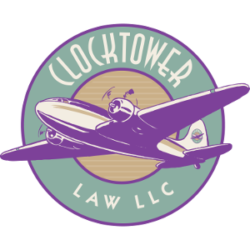How to defend your brands on the Internet.
By Erik J. Heels
First published 7/1/2007; Law Practice magazine, “nothing.but.net” column; publisher: Clocktower Law.

In 1997, if you had a domain name and a registered trademark for your brand, you were in good shape. In 2007, it takes more to protect your brand on the Internet, because the definition of “brand” has expanded to include things that aren’t necessarily trademarkable (such as the names of your key personnel) and because your brand is at risk from being used (and abused) by cybersquatters and others in ways that weren’t foreseeable a decade ago.
Theoden: “I will not risk open war.”
Aragorn: “Open war is upon you whether you would risk it or not.”
– The Lord of the Rings: The Two Towers
Your brands are under attack. The attack has been underway for years. It is about to erupt into a full-scale brand war. Now is the time to act. Here are some steps you can take to protect your brands.
Step 1: Know Your Brands
You are your brands. According to a brand survey by New York branding consultancy Landor, the top brands for 2006 were as follows:
Brands, in the Internet age, are more than product and service offerings. As you can see from the above list, they include company names, destinations, sports leagues, and people. Your brands are whatever the public uses to identify you. But the survey is not perfect. I would argue that the top brands include not “Las Vegas” but “Vegas,” not “Yahoo!” but “Yahoo,” not “Oprah Winfrey” but “Oprah.” At least not exclusively. If your brand is two words (“Oprah Winfrey”), then your brand portfolio may also include each of the words individually (“Oprah” and “Winfrey”).
How do people find you? What do they call you? What are the names of your products and services? Your company? Your key people? These are your brands. You are your brands. Know your brands.
Step 2: Register Your Brands As Top-Level Domain Names
You should register your brands as domain names in all of the generic Top Level Domains (gTLDs) (including .com, .net, .org, .biz, .info, .us, and .ws). Registering multiple domains is cheap insurance to protect against possible confusing or infringing use. Also, you should register domains in the name of your company using the exact same contact information for each domain.
Step 3: Register Your Brands As Country-Specific Domain Names
Do you have offices, employees, or clients in more than one country? Or are you planning to? If so, then you should register domain names in those countries as well. There are many country domain names, with different rules for who qualifies as a domain name registrant. Some country domains, such as Tonga’s “.to” are the functional equivalent of gTLDs, with registration open to all. Others, such as the European Community’s “.eu,” have more strict requirements about who qualifies as a registrant.
Step 4: Register Misspelled Domain Names
The longer a domain name, the more ways there are to misspell it. A five-letter domain name has about 100 common misspellings. Misspellings occur primarily in three ways: (1) a user mistypes your domain name, (2) a user mishears your domain name and thinks it’s spelled differently, and (3) cybersquatters, typosquatters, and phishers register look-alike domain names in an attempt to confuse users.
- An example of a typo domain name is www.amazon.com (correct) vs. www.amaxon.com (“x” substituted for “z” – adjacent keys on a QWERTY keyboard). “Sticky key” typos are also in this category, such as www.amazonn.com (two “Ns”) as are omitted characters such as wwwamazon.com (missing the first dot). Amazon owns all of the misspelled domain names mentioned in this paragraph.
- An example of a misheard domain name is Ohio’s Universal Tube & Rollform Equipment Corporation, which had the misfortunate (or fortunate, depending how you look at it) website www.utube.com. Then YouTube launched its video sharing service at www.youtube.com, and when Google purchased YouTube for $1.65 billion in October 2006, traffic to www.utube.com skyrocketed. YouTube ended up purchasing the utube.com domain name for $29 million, and I think the domain name was worth more than that.
- An example of a look-alike domain name is G00GLE.COM (with zeros where the letter “Os” should be). You can imagine how banks and other financial institutions could be targets of phishing schemes involving look-alike domain names.
It’s no longer sufficient to register generic domain names and country domain names. If you are serious about protecting your brands, then you also need to register misspelled domain names. Since the cybersquatters, typosquatters, and phishers already know how to pick “good” misspelled domain names, DomainTools released its Domain Typo Generator tool to level the playing field for webmasters. Of course, the Domain Typo Generator can be used for good or evil, so now that it exists, it’s even more important for brand owners to use it.
Step 5: Monitor Your Domain Names
It’s not enough to register your domain names, you have to monitor them as well. Monitoring services, such as the Mark Alert service from DomainTools, will help you find misspelled domain names, parody and commentary domain names (such as www.walmartsucks.org), and any misspelled domain names that you might have missed. You also need to keep your existing domain name registrations current, as Microsoft foolishly failed to do by letting MSNHotmail.com expire, because expired domains will get snapped up by cybersquatters when they expire.
Step 6: Register and Monitor Third-Party URLs
Many popular web services, including MySpace, FeedBurner, and BlogSpot, allow users to choose brandable URLs, which could include your brands. Because these services are highly ranked by Google, you could find your brands in highly ranked search results in URLs that are not under your control. For example, you’ll see that www.myspace.com/google is not under the control of Google, feeds.feedburner.com/pepsi is not under the control of Pepsi, and ipod.blogspot.com is not under the control of Apple. According to MySpace’s terms and conditions, accounts may not be transferred or sold, but there is an arbitration provision in case of disputes. If MySpace accounts were transferable, then you would see more brand cybersquatting on MySpace. And because dispute resolution policies are in place, Barack Obama was able to gain control of a MySpace page that was using his name (www.myspace.com/barackobama).
Step 7: Buy Keywords On Google And Yahoo
Like it or not, the courts have ruled that competitors can purchase each other’s keywords on paid search services such as Google AdWords and Yahoo Search Marketing (formerly Overture). Yahoo’s policy states:
“Advertisers sometimes bid on search terms that are the trademarks of others. For bids on search terms in Yahoo! Search Marketing’s Sponsored Search service, Yahoo! Search Marketing (formerly Overture Services, Inc.) requires advertisers to agree that their search terms, their listing titles and descriptions, and the content of their Web sites do not violate the trademark rights of others.”
In contrast, Google’s policy states:
“As a provider of space for advertisements, please note that Google is not in a position to arbitrate trademark disputes between the advertisers and trademark owners. As stated in our Terms and Conditions, the advertisers themselves are responsible for the keywords and ad content that they choose to use.”
In short, Google lets you bid on competitors’ trademarks as keywords, and Yahoo does not, but there are likely brands as keywords on all of the PPC search engines. Google is number one for a reason, and so far the courts have backed them up. What is it worth to you for your website to be found when people search for your brands? What percentage of your web traffic comes from search engines (dominated by keywords) vs. direct access (dominate by domain names)? Analyze your website statistics, and you’ll likely conclude that you have no option but to purchase your own brands as keywords.
Step 8: Don’t Game Google
Don’t think that you can use search engine optimization (SEO) or other tricks alone to improve your standing with Google. If you try to trick Google, then you run the risk of having your organic search results demoted (graylisting) or removed entirely (blacklisting). So if Google says that paying for other sites to link to your site is bad, then you may have to listen, at least until a viable competitor to Google steps up to the plate.
Step 9: Monitor Websites
Keeping track of your own websites – and those of your competitors – is a process, not an event. You need to keep track of what brands are being marketed by whom and how. There are some web-based services that allow you to track URLs and get email updates, but all of those that I have tried stink. For Windows, the best monitoring program is Website-Watcher by Martin Aignesberger, and a good starter program (without email notifications) is UpdatePatrol (formerly DeltaSpy) by Bitberry Software. For the Macintosh, you can try Subscriber 1.1 (OS X) and Changes Meter 1.3 (OS X).
Step 10: Register Your Trademarks
The basic rule for trademarks is that you should use what you register and register what you use. I put trademark registration nearly last on this list, because while it is important, it should be only one part of your overall brand protection strategy. And in the coming brand wars, having a registered trademark certainly helps. Trademark owners prevail in the majority of Uniform Domain-Name Dispute-Resolution Policy (UDRP) arbitration proceedings, and the Anticybersquatting Consumer Protection Act (ACPA) allows trademark owners to bring a civil action. But you can register 100 domain names for the cost of the filing fees for one UDRP proceeding.
And what is a trademark? It is anything that you use to identify your products and services with your company, including your company name, product names, service names, logos, taglines, sounds, colors, domain names, and some things that the USPTO hasn’t yet encountered. For example, now that web content is distributed via blogs and feeds, favicons become important for branding syndicated content. Is a favicon (the “favorite icon” favicon.ico file that appears in the menu bar, bookmark window, and elsewhere) a trademark? I think that it is. Clock Tower Law Group recently filed what I believe to be the first favicon trademark application.
Step 11: Ignore The Box, There Is No Box
In the coming brand wars, it is not enough to think outside of the box, because there is no box. Just when you think you’ve got everything figured out, the rules change, and more issues arise. The only way to keep up is to keep up. Here are some other issues to consider:
- ICANN is planning to introduce more generic domain names. Trademark owners should be prepared to register new domain names for all of their brands.
- Domain tasting allows cybersquatters to test domain names for five days. Domain tasting should be banned, and it might be banned.
- Misspelled domain names are often sold at domain auctions. It may be cheaper to purchase your cybersquatted domain names than to fight to get them back. Or maybe you can stop the auction from happening.
- Domain name research equals domain intelligence. Many people are monitoring domain name registrations to get advance notice of new products. If you want to keep a product launch secret until it launches, then you will need to be clever about how your register your domain names (using non-company DNS servers and taking advantage of private or proxy registrations).
- Search engine arbitrage makes pay-per-click (PPC) advertising more difficult for small companies. When someone engages in search engine arbitrage, they are taking advantage of a value gap for certain keywords, sending traffic for those keywords to their own sites, where they then place other ads. The presence of search engine arbitrage makes PPC campaign bargains hard to find, and it makes managing PPC campaigns for small companies more difficult. You should consider outsourcing your PPC campaigns to a company familiar with search engine arbitrage and related issues.
- Add your brands as meta tags on your website, because the courts say that your competitors can do likewise.
- Consider getting a vanity phone number for your brand.
- Google bombing can temporarily promote your website. Whether you like it or not. Another reason to monitor Google (and other search engines) daily. Compare “miserable failure” and “greatest living American.”
- JavaScript-enabled hidden links add more confusion to the search landscape.
- Be virtual. Your brands may be in use in virtual worlds such as Second Life by Linden Research.
Summary: Register, Monitor, Trademark, Repeat
I have been thinking about this article for months. Every time I tried to complete this article, it needed to be updated with some new development. By the time you read this, about two more months will have passed, and this article will again need updating. In other words, new issues are appearing almost daily.
To paraphrase Aragorn, the brand wars are upon you. Ride out and meet them. For your brands. For your company.



[EDITOR’S NOTE: In the summer of 2025, Clocktower Intern Mark Magyar used artificial intelligence (AI) software to shorten over 100 Clocktower articles by 17%. The shortened articles are included as comments to the original ones. And 17 is the most random number (https://www.giantpeople.com/4497.html) (https://www.clocktowerlaw.com/5919.html).]
* How to Defend Your Brands on the Internet
By Erik J. Heels
First published 7/1/2007; Law Practice magazine, “nothing.but.net” column; publisher: Clocktower Law.
In 1997, a domain name and registered trademark were enough to protect a brand. By 2007, the definition of “brand” had expanded to include things not necessarily trademarkable (like key personnel names) and faced new threats from cybersquatters and phishers.
Theoden: “I will not risk open war.”
Aragorn: “Open war is upon you whether you would risk it or not.”
– The Lord of the Rings: The Two Towers
Your brands are under attack. The war has been underway for years. Here are steps to defend them.
Step 1: Know Your Brands
Brands are more than products—they include company names, destinations, leagues, and even people. A Landor survey listed top 2006 brands as Google, Vegas, iPod, YouTube, eBay, Yahoo, Target, Oprah, Sony, and the NFL. Ask: how do people find you, what do they call you, and what names do they associate with you? That is your brand portfolio.
Step 2: Register Brands As Top-Level Domains
Register all major gTLDs (.com, .net, .org, .biz, .info, .us, .ws). Use the same company contact info across registrations.
Step 3: Register Country Domains
If you operate abroad, secure domains in those countries. Some (like Tonga’s .to) are open to all; others (like .eu) have stricter requirements.
Step 4: Register Misspelled Domains
A five-letter domain has ~100 common misspellings. Protect against typos, misheard domains, and look-alike phishing domains (e.g., amazonn.com, utube.com vs. youtube.com, G00GLE.com). Tools like DomainTools’ Typo Generator show likely targets—use them to register proactively.
Step 5: Monitor Your Domains
Use monitoring services like Mark Alert to catch typos, parodies (walmartsucks.org), or missed variants. Keep registrations current—Microsoft once lost MSNHotmail.com for failing to renew.
Step 6: Register & Monitor Third-Party URLs
Services like MySpace, FeedBurner, and BlogSpot let users claim brandable URLs that can rank highly in Google. Examples: myspace.com/google, feeds.feedburner.com/pepsi, ipod.blogspot.com. Dispute resolution has allowed brand owners like Barack Obama to reclaim accounts, but monitoring is essential.
Step 7: Buy Keywords on Search Engines
Courts allow competitors to buy each other’s trademarks as keywords. Google permits this; Yahoo does not. Since search dominates web traffic, you’ll likely need to purchase your own brand names as keywords.
Step 8: Don’t Game Google
SEO tricks can get you graylisted or blacklisted. If Google says buying links is bad, you may have to listen—at least until real competition arrives.
Step 9: Monitor Websites
Tracking your own and competitors’ websites is ongoing. Programs like Website-Watcher (Windows) and Changes Meter (Mac) are useful for monitoring updates.
Step 10: Register Trademarks
Use what you register, register what you use. Trademarks strengthen your defense in UDRP and ACPA actions, but remember: one arbitration costs as much as 100 domains. Trademarks cover names, logos, taglines, sounds, colors, domains, and even favicons—Clock Tower Law filed what may have been the first favicon trademark.
Step 11: Ignore the Box, There Is No Box
New threats constantly arise: ICANN is adding domains; domain tasting lets squatters test names; auctions sell typos; search engine arbitrage drives up PPC costs; even virtual worlds host brands. Protect brands with meta tags, vanity phone numbers, and constant vigilance.
Summary: Register, Monitor, Trademark, Repeat
By the time you finish reading this, new issues will already exist. To paraphrase Aragorn: the brand wars are upon you. Ride out and meet them—for your brands, for your company.